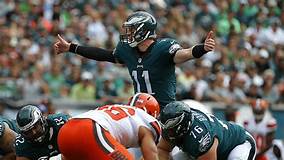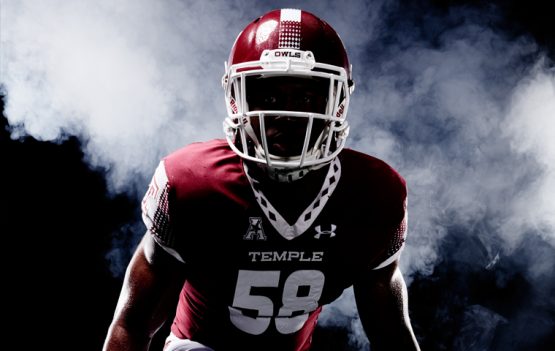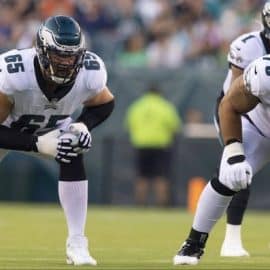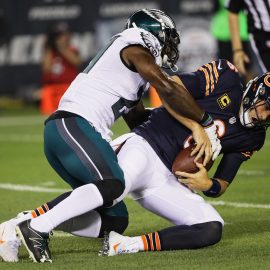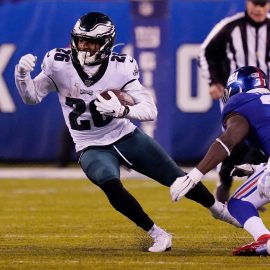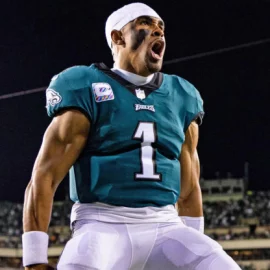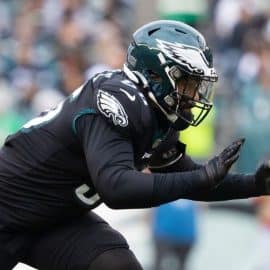There is a deeper meaning to the “Philly Special” play that changed the momentum of Super Bowl 52…
Thanks to an evolving understanding of how the human memory functions best, the Philadelphia Eagles and much of the rest of the NFL are changing the way plays are called, both on offense and defense.
“Linguistics”, or more specifically “neurolinguistics”, is a science which specializes in keying specific and simple words to capsulize complex task-oriented sequences of memory. At the clinical level, it has proven useful in helping ordinary people sort problems and resources, and how to apply language patterns to reach their goals. In the NFL , it is becoming more and more a method of switching referential index for the way plays are practiced and called during a game.
There used to be a boutique website called Grantland which got into the more psychological aspects of football such as the neurolinguistics of coaching and play-calling, but ESPN killed it off in 2015. Sportswriter and veteran NFL writer Bill Simmons founded the site in 2011. Its sports journalism pieces often had a strong focus on sports analytics and data analysis, referencing and pulling data from sites like Football Outsiders, Baseball Prospectus, Synergy, and ESPN.
Anyway, Grantland was the first resource I found back in 2013 which predicted (correctly) that smart coaches were gravitating to a new way of calling plays, using linguistic memory keys instead of traditional “numbers and letters” to practice, memorize and execute their playbooks. A good example of that was seen on sideline Sound FX documentary of the “Philly Special” call in the Super Bowl.
A writer named Chris B. Brown did that Grantland piece back in 2013. It was called “Speak My Language”, and it mostly was devoted to understanding how the New England Patriots ran their up-tempo offense so successfully. A lot of that had to do with the Patriots’ being one of the first teams to use simple linguistic keys to call complex plays.
As the writer pointed out, “There are essentially three main offensive “systems” in the NFL: West Coast, Coryell, and Erhardt-Perkins. Given that every NFL team runs basically the same plays, each of these NFL offensive families is differentiated mostly by how those plays are communicated.”
To oversimplify, the West Coast offense, made famous by Bill Walsh and still the most popular system in the NFL, uses what is essentially a memory system. On running plays, the same two-digit numbering system as most NFL and college teams is used. Passing plays, however, are typically denoted by the primary receiver’s route, such as Z-In, X-Hook, while the rest of the players are required to memorize their tasks. This system is as old as football itself, which is no surprise given that Walsh’s onetime mentor Paul Brown is credited as much as anyone with inventing the modern conception of huddles, game plans, and play calls. For more than 20 years, this system has been the dominant one in the NFL.
“The Coryell system, named after former San Diego Chargers head coach Don Coryell and used by coaches such as Norv Turner, Ernie Zampese, and Mike Martz, is built around the concept of a route tree. Many teams use a route tree (which is the idea that the base route is straight up the field, and the other routes consist of break points off that original path), but the Coryell system uses the tree as the foundation of its play-calling system. For example, the Troy Aikman–era Dallas Cowboys frequently called a play called “896,” which told one outside receiver to run a square-in route (“6”), the tight end to run a seam straight up the field (“9”), and the split end to run a skinny post (“8”). The idea was that, using the route tree, a coach could effectively call any pass combination and all a receiver had to know was the number associated with his route.”In recent years, as offenses and defenses have grown more complex, these systems have started crumbling under their own weight. With multiple formations and personnel groupings, calls that began as “22 Z-In” have gotten unwieldy.”
In the Coryell system, the elegance of the three-digit route-tree system has been rendered almost entirely obsolete. Because NFL teams operate predominantly in one-back formations, there are often more than three players running routes, and calling any pass play means having to use both numbers and words (“896 H-Shallow F-Curl”). More critically, the numerical route-tree system gives coaches and players flexibility where they don’t need it and not enough where they do. The “benefit” of a route-tree system is the ability to call any passing concept a coach could dream up, but that option is of very little use. Assuming the route tree has 10 routes (0-9), a three-digit tree gives an offense 59,049 different possible route combinations. That’s absurd. And yet, the route tree by definition only has 10 possible routes, much fewer than any NFL team actually runs. This means that any other route must be called by name, thus defeating the very purpose of having a route tree.
“This effectively makes the Coryell system sound a lot like current West Coast offense play calls,1 which have no organizing principle and have morphed into monstrosities like “Scatter-Two Bunch-Right-Zip-Fire 2 Jet Texas Right-F Flat X-Q.” The advantage of a play call like this is that it informs a player of his job better than other systems do. The disadvantage is that it’s excessively clunky, and plays that are conceptually the same can have wildly different calls.”
New England’s offense is a member of the NFL’s third offensive family, the Erhardt-Perkins system. The offense was named after the two men, Ron Erhardt and Ray Perkins, who developed it while working for the Patriots under head coach Chuck Fairbanks in the 1970s. According to Perkins, it was assembled in the same way most such systems are developed. “I don’t look at it as us inventing it,” he explained. “I look at it as a bunch of coaches sitting in rooms late at night organizing and getting things together to help players be successful.”
The backbone of the Erhardt-Perkins system is that plays — pass plays in particular — are not organized by a route tree or by calling a single receiver’s route, but by what coaches refer to as “concepts.” Each play has a name, and that name conjures up an image for both the quarterback and the other players on offense. And, most importantly, the concept can be called from almost any formation or set. Who does what changes, but the theory and tactics driving the play do not. “In essence, you’re running the same play,” said Perkins. “You’re just giving them some window-dressing to make it look different.”
“The biggest advantage of the concept-based system is that it operates from the perspective of the most critical player on offense: the quarterback. In other systems, even if the underlying principles are the exact same, the play and its name might be very different. Rather than juggling all this information in real time, an Erhardt-Perkins quarterback only has to read a given arrangement of receivers. “You can cut down on the plays and get different looks from your formations and who’s in them. It’s easier for the players to learn. It’s easier for the quarterback to learn,” former Patriots offensive coordinator Charlie Weis said back in 2000. “You get different looks without changing his reads. You don’t need an open-ended number of plays.”
“This simplicity is one of the reasons coaches around the league have been gravitating to the Erhardt-Perkins approach. “Concepts benefit you because you can plug different guys into different formations, into different personnel groups, and if they understand the concept, it gives you more flexibility,” Atlanta Falcons offensive coordinator Dirk Koetter recently explained. “The number system restricts you because it doesn’t allow you to cover all the combinations you want to use, so you have to get into so many tags that eventually you’re calling everybody’s route. In route concepts, one word can describe anything. In my experience, most kids can visualize one-word concepts better.”
“No team that uses the Coryell or true West Coast systems can adapt easily to a fully functional up-tempo no-huddle because, simply, they can’t communicate that efficiently. The Patriots are built to communicate in one- or two-word designations, and so, with judicious use of code words, it’s simply a matter of translating what they already do into a no-huddle pace.”
“Like NFL offenses, in recent years NFL defenses have also become too wordy, relying on long-winded calls designating scheme and technique and impractical checks. With the speed at which New England operates, the message for defenses has become clear: fix your terminology or perish. For opposing offenses, the mandate is less direct but just as imperative. The Patriots have set the standard for modern offense, and if teams are going to keep up, they’ll need to change not how they play, but how they talk.”
[You can access Chris B. Brown’s entire article on the lingusitics angle including play charts and diagrams by visiting the Grantland archives at this link.]Add The Sports Daily to your Google News Feed!
